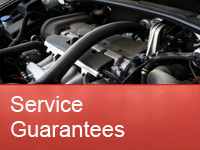Steering System Services Edmonton
The Service You Deserve, The Quality You Expect
Steering Systems
The most common types of steering systems are standard mechanical (reciprocating ball) steering and rack and pinion steering. The standard mechanical steering can be either power-assisted or non-power. Rack and pinion is almost always power-assisted, although there are rare cases where it is not.
Standard mechanical (reciprocating ball) steering: Standard mechanical steering uses a series of links and arms to ensure both wheels turn in the same direction at the same time.
The steering wheel is connected to the steering box through the steering column. The steering box turns the rotation of the steering wheel 90° and, in the case of power steering, uses high-pressure fluid to help actuate the steering.
The standard mechanical steering system is a mechanical connection from the steering wheel to the front wheels. The weaknesses of the system are at the pivot points. The pivots are ball and socket joints that wear out over time and require replacement. Loose steering parts will make a car difficult to handle and will cause the front tires to wear out prematurely. That's why it's important to have the steering checked at least once a year.
Rack and pinion steering: Rack and pinion steering, combines the steering box and center link into one unit. The steering wheel, through the steering column, is directly connected to the rack. Inside the steering rack is a pinion assembly that moves a toothed piston, which in turn moves the steering gear.
Rack and pinion steering is almost always used with a strut suspension system.
The advantage of rack and pinion steering is that it's more precise than the mechanical system. By reducing the number of parts and pivot points, it can more accurately control wheel direction, making the steering more responsive. The disadvantage of a rack and pinion steering system is that it's prone to leakage, requiring replacement of the steering rack assembly.


